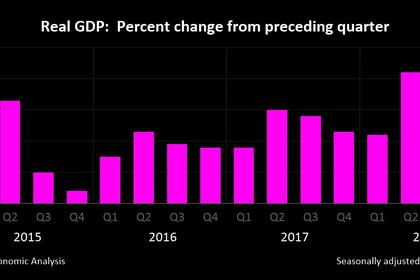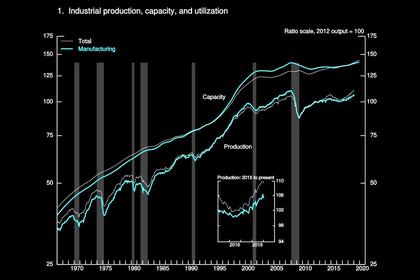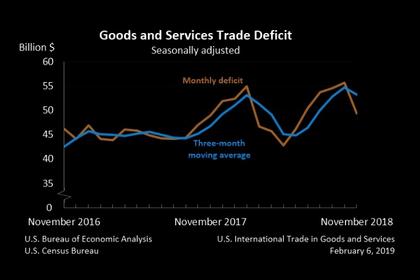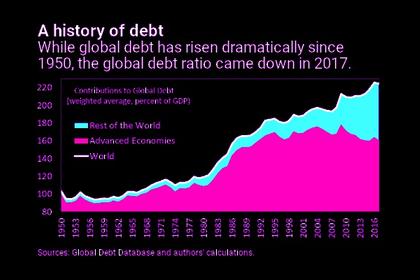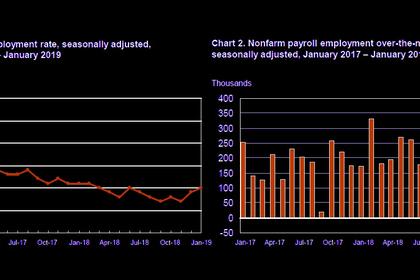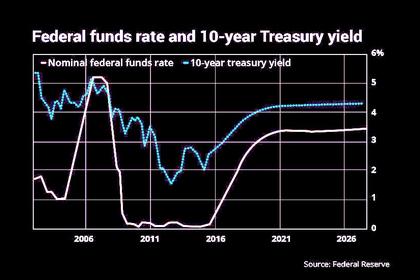
U.S. UNEMPLOYMENT DOWN TO 3.8%
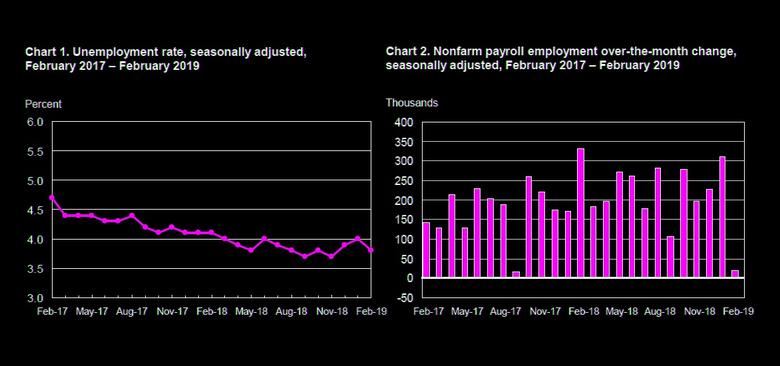
U.S. BLS - Total nonfarm payroll employment changed little in February (+20,000), and the unemployment rate declined to 3.8 percent, the U.S. Bureau of Labor Statistics reported today. Employment in professional and business services, health care, and wholesale trade continued to trend up, while construction employment decreased.
Household Survey Data
The unemployment rate declined by 0.2 percentage point to 3.8 percent in February, and the number of unemployed persons decreased by 300,000 to 6.2 million. Among the unemployed, the number of job losers and persons who completed temporary jobs (including people on temporary layoff) declined by 225,000. This decline reflects, in part, the return of federal workers who were furloughed in January due to the partial government shutdown.
Among the major worker groups, the unemployment rates for adult men (3.5 percent), Whites (3.3 percent), and Hispanics (4.3 percent) decreased in February. The jobless rates for adult women (3.4 percent), teenagers (13.4 percent), Blacks (7.0 percent), and Asians (3.1 percent) showed little or no change over the month.
In February, the number of long-term unemployed (those jobless for 27 weeks or more) was essentially unchanged at 1.3 million and accounted for 20.4 percent of the unemployed.
The labor force participation rate held at 63.2 percent in February and has changed little over the year. The employment-population ratio, at 60.7 percent, was unchanged over the month but was up by 0.3 percentage point over the year.
The number of persons employed part time for economic reasons (sometimes referred to as involuntary part-time workers) decreased by 837,000 to 4.3 million in February.
This decline follows a sharp increase in January that may have resulted from the partial federal government shutdown. (Persons employed part time for economic reasons would have preferred full-time employment but were working part time because their hours had been reduced or they were unable to find full-time jobs.)
In February, 1.4 million persons were marginally attached to the labor force, a decrease of 178,000 from a year earlier. (Data are not seasonally adjusted.) These individuals were not in the labor force, wanted and were available for work, and had looked for a job sometime in the last 12 months. They were not counted as unemployed because they had not searched for work in the 4 weeks preceding the survey.
Among the marginally attached, there were 428,000 discouraged workers in February, little changed from a year earlier. (Data are not seasonally adjusted.) Discouraged workers are persons not currently looking for work because they believe no jobs are available for them. The remaining 1.0 million persons marginally attached to the labor force in February had not searched for work for reasons such as school attendance or family responsibilities.
Establishment Survey Data
Total nonfarm payroll employment was little changed in February (+20,000), after increasing by 311,000 in January. In 2018, job growth averaged 223,000 per month. In February, employment continued to trend up in professional and business services, health care, and wholesale trade, while construction employment declined. In February, employment in professional and business services continued to trend up (+42,000), in line with its average monthly gain over the prior 12 months. Health care added 21,000 jobs in February and 361,000 jobs over the year. Employment in ambulatory health care services edged up over the month (+16,000). In February, wholesale trade employment continued its upward trend (+11,000). The industry has added 95,000 jobs over the year, largely among durable goods wholesalers. Employment in construction declined by 31,000 in February, partially offsetting an increase of 53,000 in January. In February, employment declined in heavy and civil engineering construction (-13,000). Over the year, construction has added 223,000 jobs. Manufacturing employment changed little in February (+4,000), after increasing by an average of 22,000 per month over the prior 12 months. In February, employment in leisure and hospitality was unchanged, after posting job gains of 89,000 and 65,000 in January and December, respectively. Over the year, leisure and hospitality has added 410,000 jobs. Employment in other major industries, including mining, retail trade, transportation and warehousing, information, financial activities, and government, showed little or no change over the month. The average workweek for all employees on private nonfarm payrolls decreased by 0.1 hour to 34.4 hours in February. In manufacturing, the average workweek declined 0.1 hour to 40.7 hours, while overtime was unchanged at 3.5 hours. The average workweek for production and nonsupervisory employees on private nonfarm payrolls fell by 0.2 hour to 33.6 hours.
In February, average hourly earnings for all employees on private nonfarm payrolls rose by 11 cents to $27.66, following a 2-cent gain in January. Over the year, average hourly earnings have increased by 3.4 percent. Average hourly earnings of private-sector production and nonsupervisory employees increased by 8 cents to $23.18 in February.
The change in total nonfarm payroll employment for December was revised up from +222,000 to +227,000, and the change for January was revised up from +304,000 to +311,000. With these revisions, employment gains in December and January combined were 12,000 more than previously reported. (Monthly revisions result from additional reports received from businesses and government agencies since the last published estimates and from the recalculation of seasonal factors.) After revisions, job gains have averaged 186,000 per month over the last 3 months.
-----
Earlier:
